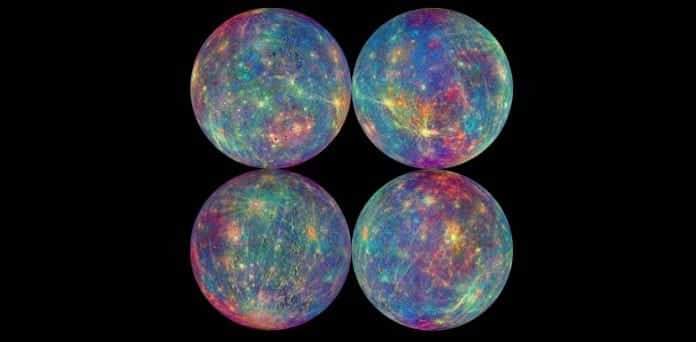Messenger Mission : Scientists discover that the Magnetic Field of planet Mercury could be as old as 4 billion of years and has an outer core made of liquid.
On April 30th 2015, the NASA’s Messenger spacecraft, which orbited Mercury for last four years ended abruptly when it got capitulated to the pull of solar gravity and crashed into Mercury’s surface as it was out of fuel. Messenger, was the first spacecraft ever to orbit Mercury and amazingly it has revolutionized various aspects regarding planet Mercury to the scientists.
The Messenger spacecraft had gathered essential data which is further aiding the scientists to get few utmost details of the solar system’s inner most planet Mercury which is located just 36 million miles from the sun. The data is also helping scientists to understand planet Mercury’s evolution over a period of time.
The Messenger spacecraft was able to reach at an altitude of just 9 miles from the planet and hence it was able to gather the measurements of the magnetic field of Mercury. Based on these measurements scientists have now discovered that Mercury possessed a magnetic field which can be dated back to almost four billion years. Scientists further concluded that the planet must have been 700 million years old as per a report published in the journal Science.
Catherine Johnson, a planetary scientist at the University of British Columbia in Vancouver and lead author of the study, made a statement in the UBC news: “The science from these recent observations is really interesting and what we’ve learned about the magnetic field is just the first part of it.”
Besides Earth, Mercury is the only rocky planet in the inner solar system to have such an enormous magnetic field. Scientists believe that similar to Earth, Mercury’s magnetic field has been generated as a result of the “dynamo effect” which is a result of circulation of liquid iron deep inside its core.
For a long time scientists have known that there does exist some magnetic field in Mercury, though somewhat weaker when compared to that of Earth, however they did not know the age of this magnetic field. Earlier the Mariner 10 spacecraft revealed that Mercury possessed a magnetic field that is similar to Earth’s however it is about 100 times weaker in comparison. Messenger spacecraft was able to reach much closer to the planet and its magnetometer was able to detect the trace signals of magnetization in the planet’s crust. Based on the number of impact craters, scientists calculated the age of these regions on the surface and estimated that the planet’s magnetic field is very much ancient which might be at least 3.7 billion to 3.9 billion years old.
Catherine Johnson told Space.com: “The strength of Mercury’s magnetic field may have ranged anywhere from its strength today to something about 100 times stronger, comparable to the strength of Earth’s magnetic field at Earth’s surface today.”
Though the present day magnetic field of Mercury is extremely weak; scientists feel that since Mercury has been possessing a magnetic field for billions of years that is an indication that once Mercury’s magnetic field must have been as strong as the Earth’s.
Johnson further added: “Being able to pin down how long Mercury has had a magnetic field helps us narrow down scenarios for the early history of Mercury and how it has changed over time.”
On the other hand, scientist have also gathered information that in lower latitudes, the crust of planet Mercury is thicker whereas at the poles it gets thinner. This distribution indicates that Mercury could have an outer core made of liquid. Further they also feel that the core is large and comprises of about 85% of the planet’s radius which is more as compared to that of Earth. The findings indirectly point out that beneath the crust of Mercury lies a layer which consists of liquid iron sulfide and this could make the planet different from other planets in the solar system.
A new research indicates that Mercury’s elevation changes are much smaller in comparison to Moon or Mars. A major topographic feature is an up-liftment in the planet’s northern latitude inside a major volcanic plain. It seems the area has been lifted up after formation of the plains.
Scientists have also come across various weird findings, based on the crater study, which indicates that Mercury must have underwent major topographic changes after its formation and this could have been due to its tectonic forces, however this still needs a further study.
Science Express Today will soon publish the findings related to Mercury in its digital journal. Messenger spacecraft’s during its first year in Mercury’s orbit has captured various photos of the planet which is also available and help scientists to delve further in this planet.

